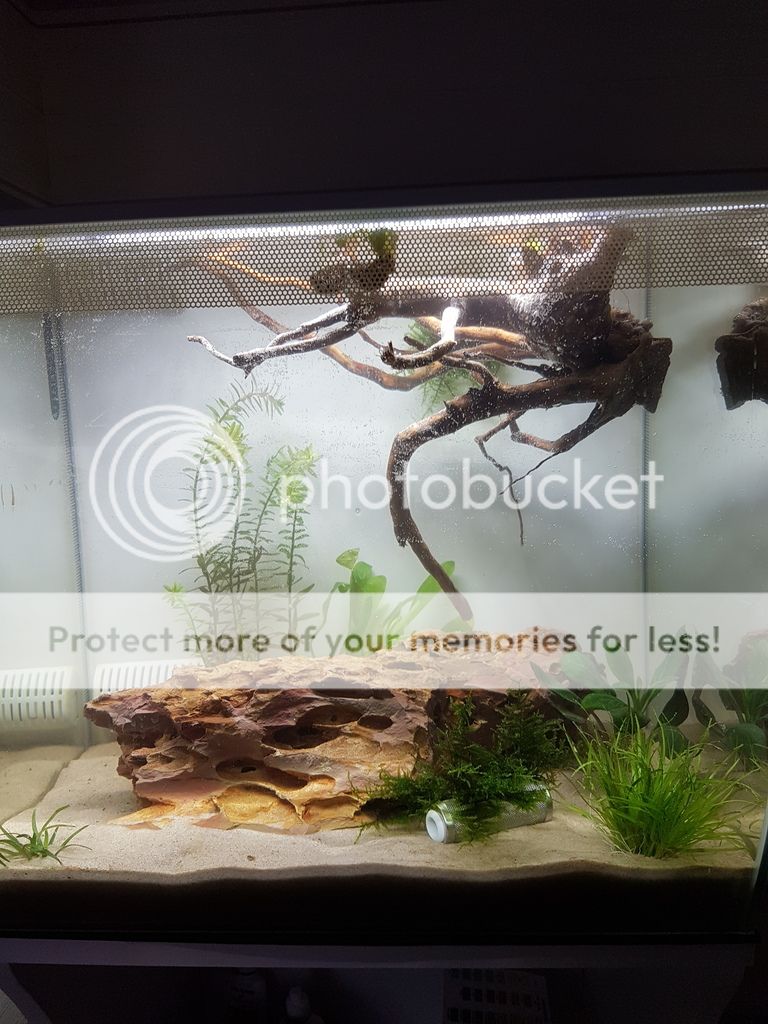Frogbit is a floating plant which will take up ammonia quite quickly, and won't turn it into nitrite. Mosses are slow growing and won't take up very much ammonia compared to frogbit. Depending on how much frogbit you have, there may be enough to use all the ammonia made by future fish - but it would need more than one or two plants.
Slate is an inert rock, which will not affect the water chemistry. But it can be sharp at broken edges so make sure you smooth off any sharp bits.
Having a reasonable KH during cycling is important for 2 reasons.
Firstly, as stated earlier, it stabilises the pH. If there is not much KH, it gets used up during cycling and the pH crashes. The bacteria do not grow well at very low pH.
Secondly, the bacteria need inorganic carbonate to multiply (as stated in the fishless cycling method on here). As KH, ie carbonate, is used up there is none left for the bacteria.
I see that scotty lives in Scotland and most of Scotland has very soft water with low KH. You should be able to find your general hardness GH on your water company's website to confirm that you do have soft water but unfortunately very few UK companies give KH (and where they do give it, they call it alkalinity rather than KH)
I would definitely do a big water change to replenish the KH the cycle has used up.
Slate is an inert rock, which will not affect the water chemistry. But it can be sharp at broken edges so make sure you smooth off any sharp bits.
Having a reasonable KH during cycling is important for 2 reasons.
Firstly, as stated earlier, it stabilises the pH. If there is not much KH, it gets used up during cycling and the pH crashes. The bacteria do not grow well at very low pH.
Secondly, the bacteria need inorganic carbonate to multiply (as stated in the fishless cycling method on here). As KH, ie carbonate, is used up there is none left for the bacteria.
I see that scotty lives in Scotland and most of Scotland has very soft water with low KH. You should be able to find your general hardness GH on your water company's website to confirm that you do have soft water but unfortunately very few UK companies give KH (and where they do give it, they call it alkalinity rather than KH)
I would definitely do a big water change to replenish the KH the cycle has used up.


 /s941.photobucket.com/user/scotty1971_bucket/media/Mobile%20Uploads/20190308_174352_zpsk0qobxmg.jpg.html]
/s941.photobucket.com/user/scotty1971_bucket/media/Mobile%20Uploads/20190308_174352_zpsk0qobxmg.jpg.html]